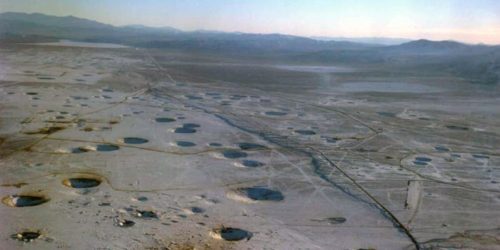
CWP Blog | CWP
Talk to Terrie: What’s Faster Than a Speeding Bullet?
December 1, 2020
December 1, 2020
CWP
CWP Blog
For those of you who have grandchildren, you know what a joy and blessing it is to have them in your life. I looked forward to handing down family traditions, my love of gardening and how to properly decorate for the holidays. Not once did I ever imagine that the two of my grandchildren would take an interest in atomic bombs.
One grandchild once asked me, in a very serious voice, if Gramps would turn into the Hulk because he swallowed radiation. I think that grandchild was actually hoping Gramps could, since the Hulk is one of his favorite characters. The older sibling sends me things they find online that may pique my interest – like the fact that Amazon sells uranium ore for only $39.95.
I think the most interesting article they ever sent me was this video from YouTube, How a Manhole Cover Became the Fastest Manmade Object Ever.
I wasn’t 100% sure this video was a factual account or if parts of the video were exaggerated so I dug deeper. The story happens to be true.
Way back in 1957, the first contained underground atomic test, Pascal-A, was detonated at the Nevada Test Site during the Plumbbob series of tests. The bomb was placed at the bottom of a 485 shaft that was three foot in diameter. Before the detonation, a 4” iron cap, similar to a manhole cover, was placed on top of the shaft.
Business Insider interviewed Robert Brownlee, the astrophysicist who designed the test and was present for the detonation, in 2016. Dr. Brownlee told the reporter that the iron cap in Pascal-A exploded off the top of the tube “like a bat”. Dr. Brownlee went on to say that because he wanted to measure how fast the iron cap traveled, he designed a second test, Pascal-B.
The Pascal-B experiment was filmed. One frame captured a small section of the cap in the air after the detonation. Dr. Brownlee used the information from the test and the film and estimated that the velocity of the iron cap was 125,000 mph or 5 times the speed necessary to escape Earth. The iron cap was never found. Dr. Brownlee theorized that the cap was traveling too fast so that it would not burn up in Earth’s atmosphere. The speed would also prevent it from being captured by Earth’s gravity to become a satellite.
“So the next time you look up at the stars, remember Brownlee’s story. Somewhere out there, a manhole cover launched by a nuclear bomb is probably speeding away from Earth at about 125,000 mph.” Rebecca Harrington, Business Insider reporter.
Photo: Courtesy of Business Insider
